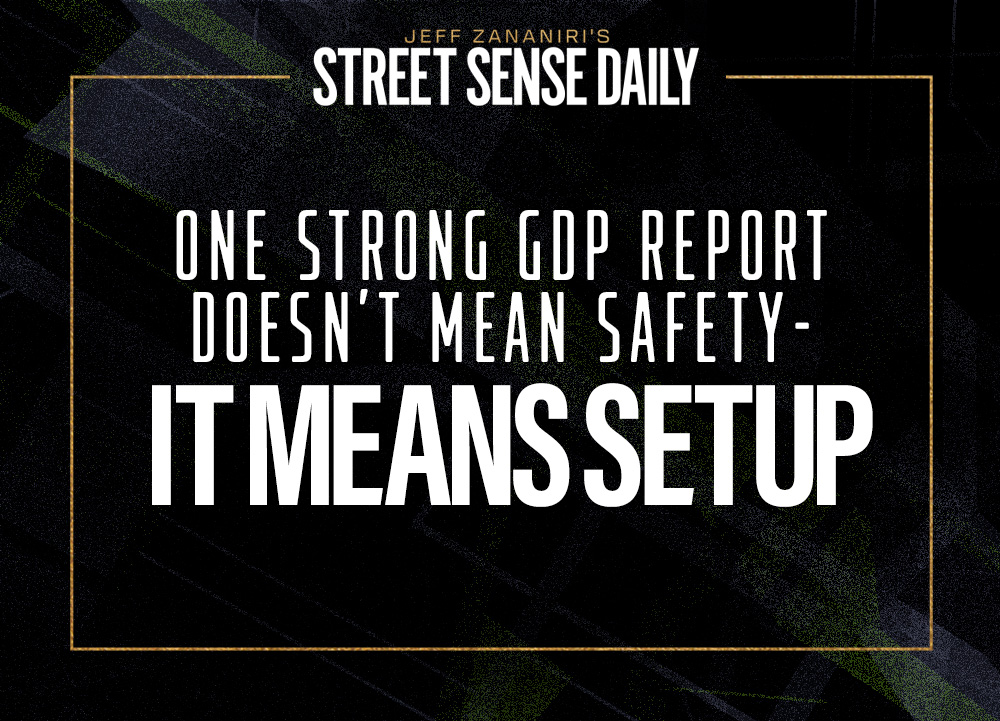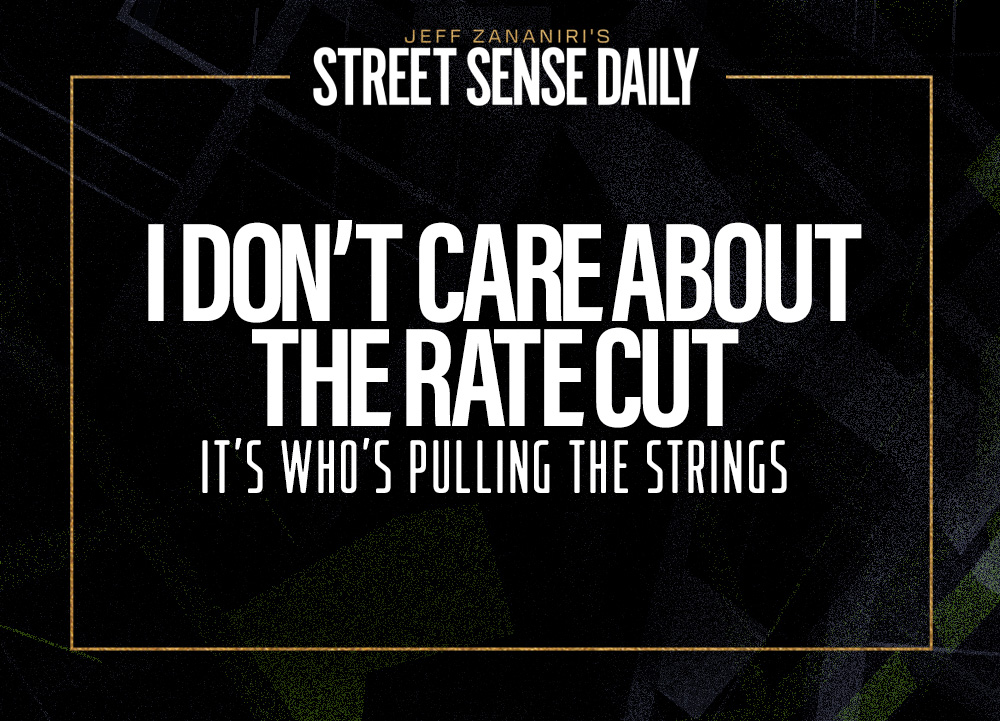Good morning, traders,
Markets love surprises, but traders love predictable surprises, and that’s exactly what we’ve been getting lately.
It’s economic data that surprises the headlines but, if you’re watching the right metrics, gives you a road map well in advance.
Look at the big one: GDP.
After contracting in Q1 for the first time in three years, GDP just printed a 3% gain for Q2. That’s a hard reversal, and it’s coming at a time when many were calling recession.
But this number is popping despite the tariff wave hitting the economy. That tells you something critical:
This market is more resilient than the headlines want it to be.
Private sector hiring came in stronger than expected too: 104,000 new jobs in July. Not massive, but after a soft spring, it’s another sign the economic engine still has fuel.
But not everything is rosy.
The Fed kept its benchmark rate steady yesterday because of economic uncertainty — and despite better-than-expected GDP.
Mortgage demand fell 3.8% just last week, and that’s no fluke. Rates are staying sticky, housing affordability is strained, and those high-end buyers who drive volume are sitting on the sidelines.
Here’s what all of this means for traders.
Pressure Points
Let’s cut the noise.
You don’t need to dissect GDP components or count every tick in jobless claims.
You just need to know where the money is flowing, and where the pressure’s building.
Here’s how I’d think about trading this environment:
1. Watch the Disconnects
You’ve got growth data pointing up, hiring bouncing back, but housing flashing red.
That’s a setup for sector-specific trades.
Financials and builders are vulnerable. Tech and industrials? Still riding the growth wave.
There’s no need to make a broad market bet when you can target the weak links and ride the strong hands.
2. Tariff Risk = Volatility Opportunity
President Trump’s stance on tariffs is clear: no extension Friday, more pressure coming, including a new 25% threat on Indian goods.
That’s going to rattle international supply chains — and it won’t be evenly distributed.
This gives traders an opportunity to cash in on any panic.
3. Stick to the Data, Not the Drama
Here’s what separates real traders from the tourists: reacting to data, not emotion.
GDP up 3%? That’s real. Hiring bounce? Real. Mortgage drop? Real.
Twitter rants and press conference soundbites? Noise.
Build your trades off the numbers, not the narrative.
Right now, earnings from consumer names and industrials are lining up with the macro bounce. That’s a green light.
But if rates keep pressuring housing, that’s a red flag. Don’t ignore it just because the S&P is green.
4. Timing Beats Prediction
Trying to guess what GDP will do next quarter is a waste of energy. Trading what’s happening now is where the money is made.
Markets weren’t pricing in a Fed pivot yet. Inflation is sticky.
But growth is back, which means we’re not in crash mode. That keeps the bid under stocks — for now.
Use this to your advantage. Look for breakout setups in strong sectors, and don’t be afraid to fade the weaker names that rally on fluff.
Big Picture
The economy isn’t breaking. It’s adjusting.
That’s what real traders thrive on.
Not perfection. Not clarity. Movement.
And right now, we’re getting plenty of it.
Make sure your positions reflect what’s actually happening, not what you wish was happening.
Stay street smart,
Jeff Zananiri
P.S. Join Aaron Hunziker and I today at 10 a.m. ET for APEX Live, where he’ll walk you through the setups we’re watching, how the market’s reacting, and where the real opportunities are right now.
This is the most critical session of the quarter.
📅 Today | ⏰ 8 p.m. | APEX Live
*Past performance does not indicate future results



